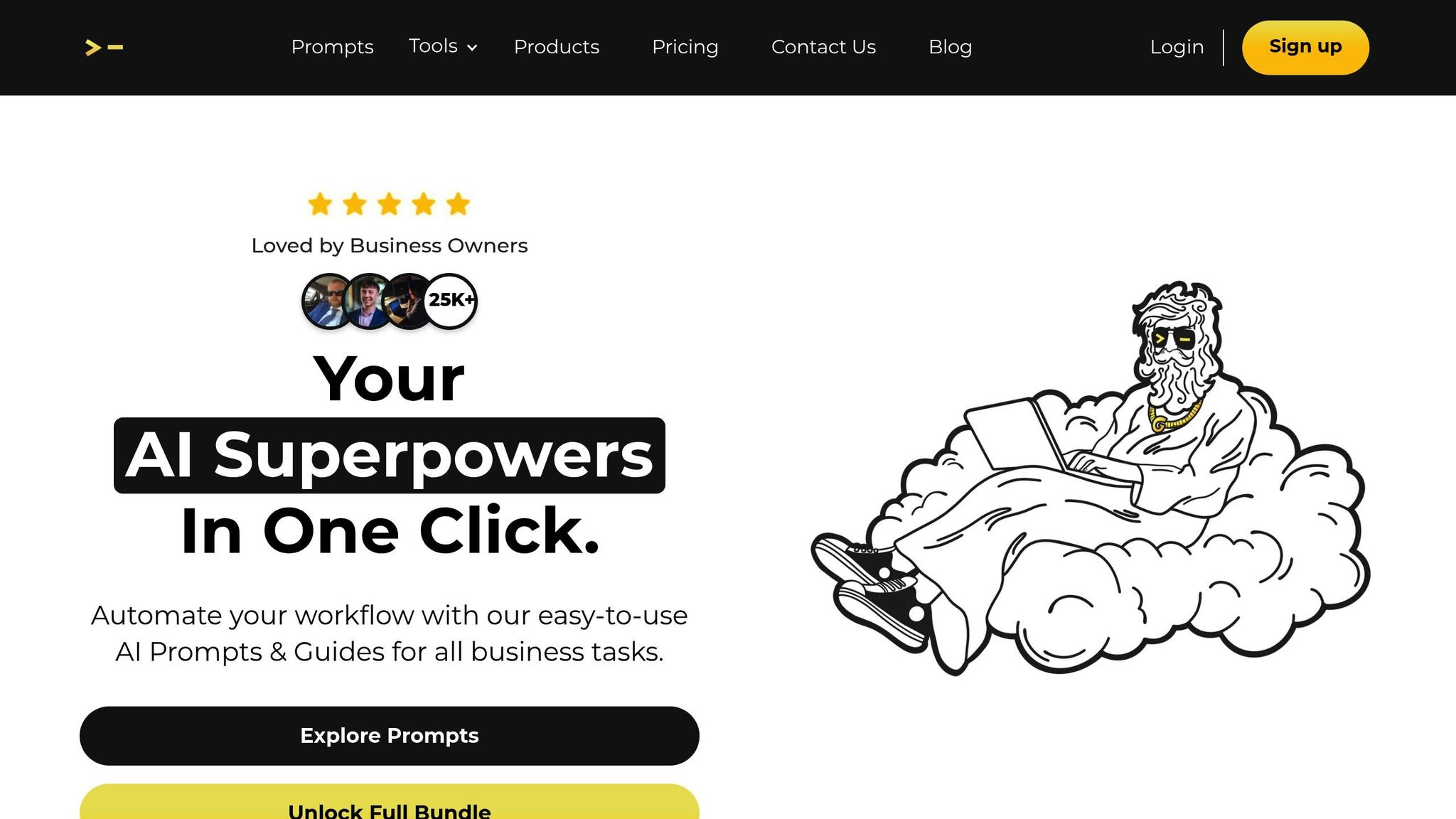
AI bias in advertising can harm your brand, waste money, and alienate audiences. It happens when algorithms make unfair decisions due to flawed data or design. This leads to issues like excluding demographics, reinforcing stereotypes, or misrepresenting groups. Addressing bias is critical not just for ethical reasons, but also to protect your reputation, maximize your ad spend, and avoid legal trouble.
By tackling AI bias, you can reach more customers, avoid mistakes, and build trust while staying compliant with growing regulations.
To tackle bias in AI-driven advertising, it’s essential to understand where it originates. Bias often creeps in at specific points within the advertising technology stack, and if left unchecked, it can lead to discriminatory outcomes that harm both campaigns and brand reputation. Let’s take a closer look at three major sources of bias that can disrupt advertising efforts.
AI systems are only as good as the data they’re trained on, and when the training data is flawed, the entire system becomes unreliable. Data collection bias occurs when datasets fail to accurately reflect the real world or the intended audience.
This bias often begins during the data gathering phase. For example, if historical advertising data is skewed toward certain demographic groups, the AI might mistakenly assume these patterns are universal. Geographic bias is another common issue - datasets that overrepresent urban areas while neglecting rural regions can lead to AI systems that prioritize metropolitan audiences. Additionally, if training data reflects outdated social norms or economic conditions, it can perpetuate biases that no longer align with current realities. These flaws in data design can result in advertising campaigns that fail to be inclusive or fair.
Algorithmic bias stems from the design and optimization choices within AI systems, which can unintentionally favor certain groups or outcomes over others.
Many advertising algorithms are built to optimize for metrics like click-through rates or conversions. While this seems like a practical approach, it can lead to unintended consequences. For example, if certain demographic groups historically show higher engagement rates - perhaps due to factors unrelated to genuine interest - the algorithm may disproportionately target those groups. This can result in the exclusion of other valuable audiences, distorting targeting strategies and reducing the overall effectiveness of campaigns.
User interaction bias occurs when the AI system learns from user behavior that reflects existing societal prejudices, reinforcing these patterns in future decisions.
"User clicks, upvotes, or selections act as feedback that the system optimizes for. Over time, this leads to reinforcement of confirmation biases, polarization in recommender systems, and shallow personalization loops."
- Vineeth Reddy, Community Article Author
This feedback loop can create a cycle where the AI doubles down on biased assumptions. For instance, Spotify’s Discover Weekly in 2021 disproportionately favored male artists. As users engaged with these recommendations, the algorithm further amplified male artist exposure, limiting opportunities for female creators and perpetuating a bias.
The issue isn’t limited to individual behavior; it also extends to broader interaction patterns. For example, if certain demographic groups engage with ads differently due to cultural norms, the AI might misinterpret these behaviors as universal preferences. This misunderstanding can lead to skewed targeting that overlooks the diversity of audience needs.
AI bias, if left unchecked, can wreak havoc on marketing efforts. It can tarnish a brand's reputation, drain budgets, and even expose companies to legal troubles. For marketers, understanding these risks is crucial - not just for ethical reasons, but because it directly affects business outcomes.
When AI bias sneaks into marketing campaigns, it can lead to public relations nightmares that take years to repair. Algorithms making discriminatory decisions in ad targeting don’t go unnoticed by consumers. And when people feel excluded or misrepresented, the backlash can be swift and unforgiving.
These errors send an unintended message about a brand’s values. Even if the bias wasn’t intentional, social media amplifies the issue, turning small missteps into major controversies. Decades of consumer trust can evaporate in just a few days when audiences feel alienated by an ad campaign.
The fallout isn’t just emotional - it’s financial. Negative press, boycotts, and damaged brand perception can hurt sales and force companies into costly recovery efforts. Rebuilding trust often demands heavy investment in new campaigns, community engagement initiatives, or even a full rebranding. The result? Wasted resources and operational setbacks that could have been avoided.
AI bias doesn’t just harm reputations - it also drains marketing budgets. When algorithms favor certain demographics based on flawed assumptions, they end up wasting money on ineffective targeting while ignoring valuable audience segments. This misallocation of resources can cripple a campaign’s effectiveness.
For example, biased AI might funnel most of the budget toward oversaturated audiences, leaving high-potential groups completely overlooked. This not only inflates costs but also reduces returns on investment. Companies essentially pay a premium to target groups that may not deliver the best results, while competitors capitalize on the untapped markets.
The problem compounds over time. Biased systems reinforce their initial mistakes, making it harder to diversify targeting strategies. This shrinking pool of targeted consumers limits growth opportunities, leaving companies stuck in a cycle of inefficiency.
Another issue is frequency capping - or the lack of it. Biased algorithms might overexpose certain groups to ads, leading to ad fatigue, while other demographics barely see the campaign. The result? Diminishing returns on ad spend and missed chances to connect with new audiences.
The financial and reputational risks of AI bias are only part of the story. Companies also face growing ethical and regulatory challenges. Laws against discriminatory advertising apply whether the bias comes from humans or algorithms, and regulators are paying close attention.
The Federal Trade Commission has made it clear: companies are accountable for the outcomes of their AI systems. Pleading ignorance won’t cut it if biased algorithms lead to discriminatory practices. Legal penalties aside, these failures can also strain relationships with key stakeholders, including investors, partners, and employees, who increasingly expect businesses to prioritize fairness and inclusion.
Regulators are also becoming more sophisticated in identifying algorithmic bias. Agencies are investing in technical expertise to audit AI systems and flag discriminatory patterns. Companies that wait for enforcement rather than addressing bias head-on risk facing harsher penalties and stricter oversight.
Operating globally adds another layer of complexity. Different countries have varying rules about AI fairness and transparency. What’s acceptable in one market might break the law in another, making it essential for businesses to proactively address bias across all regions where they operate.
The encouraging news is that AI bias can be addressed. By understanding the root causes of bias, businesses can adopt strategies to create fairer advertising systems that better serve diverse audiences. Taking proactive steps, such as conducting regular audits and investing in fair practices, can improve campaign outcomes, reduce legal risks, and enhance brand trust.
Fair AI starts with the data it learns from. Bias often stems from training data that doesn’t accurately represent the diversity of the audience. Algorithms trained on such data may inadvertently exclude certain groups, leading to skewed outcomes.
To counter this, companies should actively gather data from underrepresented groups rather than relying solely on their existing customer base. This involves collecting insights from different age ranges, income brackets, geographic areas, and cultural backgrounds. The aim is to create datasets that reflect the true diversity of the target market, not just the profiles of current customers.
It’s also important to capture varied behavioral patterns, such as differences in technology access, experience levels, and engagement preferences. Regular audits can help identify gaps in representation, allowing for targeted data collection to fill those voids. This process ensures that AI systems stay relevant as markets evolve. In turn, diverse datasets not only minimize bias but also improve campaign effectiveness and build trust with audiences.
Bias-aware AI methods can play a critical role in identifying and addressing bias automatically. For example, algorithms can be designed to detect and adjust biased outputs, ensuring more equitable targeting and content delivery.
Machine learning models can also include fairness constraints, which act as safeguards to prevent decisions that disproportionately favor certain groups. These measures help ensure that advertising budgets and targeting decisions are distributed more equitably across diverse audience segments.
Tools like TensorFlow Fairness Indicators and IBM’s AI Fairness 360 are particularly useful. They allow marketing teams to monitor AI models for bias and make adjustments without requiring advanced technical skills. These platforms feature dashboards that display real-time fairness metrics, making it easier to spot potential issues before they impact live campaigns.
Additionally, automated systems can make ongoing micro-adjustments to targeting and delivery when bias is detected. By continuously monitoring performance across demographic groups, these tools help maintain fairness throughout the campaign lifecycle.
While technology is key in addressing bias, it’s not enough on its own. Human oversight is critical for identifying issues that automated systems might overlook and for making nuanced decisions about fairness.
Audits should be conducted at all stages of a campaign - before, during, and after - to evaluate targeting strategies, creative content, and performance metrics across different demographics. These audits are most effective when performed by diverse teams, as varied perspectives increase the likelihood of spotting biases or exclusionary practices that homogeneous teams might miss.
Documenting all bias detection efforts is equally important. Keeping records of what was reviewed, the issues found, and the actions taken promotes accountability and continuous improvement.
To further strengthen these efforts, organizations can establish governance structures like AI ethics boards. These boards can set fairness standards, review high-risk campaigns, and provide guidance on ethical dilemmas. Such measures ensure that bias prevention remains a priority and aligns with the ethical principles discussed earlier.

Platforms like God of Prompt offer practical tools to support bias-aware advertising. With over 30,000 AI prompts and toolkits, this resource helps teams design campaigns that consider diverse audiences from the start.
God of Prompt’s categorized prompts provide guidance for creating unbiased messaging across tools like ChatGPT, Claude, and Midjourney. Instead of starting from scratch, marketing teams can use pre-designed prompts that incorporate inclusive language and fairness considerations.
The platform also includes templates for audience research, encouraging broader demographic insights, and content creation prompts designed to avoid stereotypes. These resources help teams move beyond conventional assumptions and create campaigns that resonate with a wider range of people.
Additionally, God of Prompt offers step-by-step guides for implementing bias-aware practices in AI-driven campaigns. With regular updates, the platform ensures that its tools align with the latest best practices and regulatory standards, helping teams remain effective and compliant as the landscape evolves.
Creating bias-free advertising requires a combination of specialized tools and thoughtful strategies. By leveraging prompt libraries and real-time monitoring, marketers can ensure their campaigns remain inclusive and fair, complementing earlier efforts to minimize bias.
The foundation of a bias-free campaign lies in crafting precise, inclusive prompts. How you instruct an AI model directly shapes the content it produces, making prompt engineering a key skill for ensuring fairness.
Effective prompts should explicitly address diversity from the outset. For instance, instead of asking an AI to "create an ad for working professionals", a more inclusive approach might be to request: "Create an ad that resonates with working professionals across different ages, backgrounds, and industries, while avoiding stereotypes related to gender, race, or socioeconomic status."
Platforms like God of Prompt offer tools to make this process easier. Their Complete AI Bundle includes over 30,000 specialized prompts tailored for marketing teams, with a focus on avoiding bias. These prompts cover everything from social media ads to email campaigns, ensuring messaging reflects diverse demographics. Additionally, their visual content prompts are designed to generate imagery that mirrors real-world diversity. With lifetime updates, these templates evolve to align with emerging best practices and regulatory changes, streamlining the creation of inclusive campaigns.
While well-crafted prompts set a solid foundation, real-time monitoring ensures fairness is maintained throughout the campaign. Modern advertising platforms now include tools that can detect discriminatory patterns and imbalances across different demographic groups.
For example, some ad management systems feature fairness indicators that highlight potential biases in audience targeting. These tools can flag exclusive targeting practices and recommend adjustments to ensure a more balanced reach. Transparency features in programmatic advertising systems also allow marketers to see which audiences are being targeted and how often, helping to identify and correct imbalances.
Combining automated tracking with human oversight adds another layer of accountability. While technology can catch many issues, human review ensures that subtle biases or context-specific concerns aren't overlooked.
Following established industry and legal guidelines is essential for ethical and compliant advertising. Standards like the Interactive Advertising Bureau (IAB) guidelines, GDPR, and CCPA promote transparency and fairness, reducing legal risks while building consumer trust.
Organizations like the IAB have created frameworks that emphasize accountability and fairness in automated decision-making. Many companies also develop their own AI principles to address bias and ensure responsible use of algorithms.
To further reinforce ethical practices, some businesses establish internal ethics boards. These boards review high-risk campaigns before launch, incorporating insights from legal, marketing, and community stakeholders. By integrating these tools, standards, and oversight mechanisms, marketers can create campaigns that are not only inclusive but also aligned with ethical and legal expectations.
Creating AI advertising campaigns free of bias isn’t just ethical - it’s smart business. It protects your brand’s reputation, ensures effective use of your ad budget, and strengthens consumer trust. On the flip side, biased advertising can tarnish your image, waste resources, and even lead to legal consequences.
To achieve fairness, a thoughtful approach throughout the AI lifecycle is essential. Start by using diverse and representative data, paired with clear and transparent data usage policies. Regular external audits can help verify fairness, while human oversight ensures that AI-generated content aligns with your brand’s values and messaging.
Maintaining fairness isn’t a one-and-done effort - it requires ongoing monitoring. AI systems need to evolve alongside shifting consumer behaviors. This means updating datasets regularly, analyzing algorithmic outcomes across various demographics, and staying informed about new ethical guidelines and regulations.
Fortunately, there are tools available today to help marketers tackle bias effectively. From prompt libraries designed to encourage inclusive content creation to real-time systems that detect discriminatory patterns, these resources make bias-free advertising more accessible. For instance, God of Prompt offers bias-aware prompts and templates that support inclusive campaign creation.
Ultimately, eliminating bias in AI-driven advertising is an investment in your brand’s future. It’s an ongoing commitment that demands attention, resources, and organizational support. Companies that prioritize fairness today will not only foster genuine connections with diverse audiences but also avoid the costly risks of biased advertising. Addressing AI bias isn’t just a choice - it’s a necessity for staying competitive and ethical in today’s market.
To make AI-driven advertising more fair and balanced, businesses should prioritize using diverse datasets that represent a wide range of demographics, viewpoints, and cultural backgrounds. This approach ensures that the AI is better equipped to understand and cater to real-world audiences.
In addition, conducting bias audits on a regular basis and leveraging tools designed to assess AI fairness can help spot and address unintended biases early on. It's also essential to continuously test and monitor AI-generated outputs to ensure advertising campaigns stay fair and inclusive as they evolve. Being transparent about the sources of data and committing to ongoing validation processes are critical steps in upholding ethical advertising standards.
To keep AI advertising fair and impartial, businesses need to make system audits a routine practice. This means taking a close look at the quality of training data, assessing fairness, and regularly checking how well the models are performing. Keeping an eye on real-time outputs and evaluating the effects of campaigns can quickly uncover any new biases that might crop up.
Using feedback loops and putting proactive measures in place to tackle bias are key steps to ensure fairness and inclusivity. By staying alert and consistently improving their systems, companies can design advertising campaigns that are both fair and impactful.
Tools such as TensorFlow Fairness Indicators play a crucial role in spotting and addressing biases in AI models. These tools evaluate how models perform across various demographic groups, making it easier to uncover disparities and take steps to fix them.
By using these insights, businesses can ensure their advertising campaigns are more inclusive and fair. This not only builds trust but also helps create campaigns that connect with a wide range of audiences, steering clear of unintended bias or exclusion.





